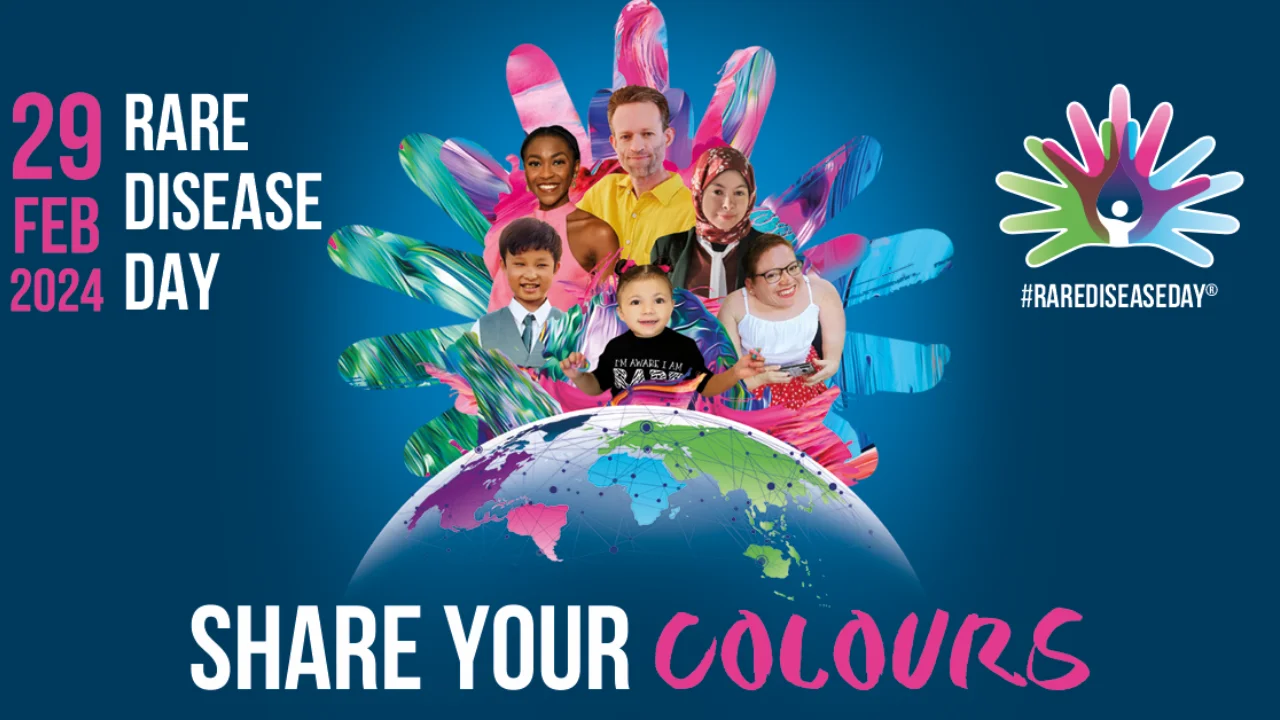Rare Disease Day 2024
Rare Disease Day is a globally coordinated movement that occurs annually on the last day of February to raise awareness about rare diseases and their impact on patients and their families. This year it falls on 29th February.
Rare Disease Day Theme 2024
The theme for Rare Disease Day 2024 is “Unite for Change! Unite for Equity!”. The theme highlights the unique needs of the rare disease community.
What are Rare Diseases
Rare diseases are a diverse group of medical conditions that affect a small number of people. While their exact definition varies slightly depending on the region, they are generally characterized by the following:
- Low prevalence: Affecting fewer than 1 in 2000 individuals (in the United States) or 65 per 100,000 individuals (according to the World Health Organization).
- Chronic and debilitating: Often causing significant physical, emotional, and social challenges for patients and their families.
- Complex and diverse: Presenting a wide range of symptoms and requiring specialized diagnosis and treatment approaches.
Key facts about Rare Diseases
- Number: Over 7,000 rare diseases have been identified, affecting an estimated 300 million people worldwide.
- Causes: Rare diseases can be caused by various factors, including genetic mutations, environmental exposures, and autoimmune reactions.
- Diagnosis: Diagnosing rare diseases can be challenging due to their rarity, varied symptoms, and lack of awareness among healthcare professionals.
- Treatment: While there is no cure for most rare diseases, treatments can often manage symptoms, improve quality of life, and prolong life expectancy.
- Impact: Rare diseases have a significant impact on individuals, families, and healthcare systems.
Examples of Rare Diseases
- Cystic fibrosis: A genetic disorder affecting the lungs and digestive system.
- Huntington’s disease: A neurodegenerative disorder causing involuntary movements and cognitive decline.
- Spinal muscular atrophy: A genetic disorder affecting the muscles and nerves.
- Duchenne muscular dystrophy: A genetic disorder causing muscle weakness and degeneration.
- Niemann-Pick disease: A group of genetic disorders affecting the body’s ability to process fats.
Raising awareness about rare diseases is crucial for several reasons
- Early diagnosis and treatment: Early diagnosis can significantly improve the outcome for patients with rare diseases.
- Increased research and development: Increased awareness can lead to more funding for research and development of new diagnostic tools, treatments, and cures.
- Improved access to care: Raising awareness can encourage healthcare professionals to become more knowledgeable about rare diseases and improve access to specialized care.
- Support for patients and families: Increased awareness can lead to greater understanding and support for individuals and families living with rare diseases.
By working together, we can make a difference in the lives of individuals with rare diseases and their families.
History of Rare Disease Day
Rare Disease Day, observed annually on the last day of February (or 29th on leap years), has a rich history of raising awareness and advocating for individuals living with rare diseases. Let’s delve into its origins and evolution:
1980s – Recognizing the Need:
- The 1980s saw increased recognition of the unique challenges faced by individuals with rare diseases and their families.
- The complexity of diagnosis, limited treatment options, and lack of resources highlighted the need for a dedicated platform to raise awareness.
1999 – The First Rare Disease Day:
- In 1999, the European Organisation for Rare Diseases (EURORDIS) proposed a day to raise awareness about rare diseases across Europe.
- February 29th was chosen as the date due to its rarity, mirroring the rarity of rare diseases themselves.
- The first Rare Disease Day was observed in 11 European countries, marking the beginning of a global movement.
2008 – Going Global:
- Recognizing the growing interest and need, Rare Disease Day expanded beyond Europe in 2008.
- Countries from other continents joined the movement, demonstrating the global reach of rare diseases and the need for international collaboration.
2015 – Official Recognition:
- In 2015, the UN General Assembly officially recognized Rare Disease Day, further solidifying its global significance.
- This recognition provided a platform for international collaboration and resource sharing, strengthening the global fight against rare diseases.
Evolving Themes and Focus:
- Over the years, Rare Disease Day has adopted various themes focusing on specific aspects of rare diseases and the challenges faced by the community.
- Some notable themes include:
- 2018: “Research for Rare Diseases”
- 2020: “Rare Diseases: Visibility, Recognition, Research, and Access to Treatment”
- 2023: “Together for a Brighter Future for Rare Disease Patients”
Constant Growth and Impact:
- Rare Disease Day continues to grow in popularity and impact, with increasing participation from countries, organizations, and individuals worldwide.
- It serves as a crucial platform for:
- Raising awareness about rare diseases and their impact.
- Promoting research and development for diagnosis, treatment, and cure.
- Advocating for equitable access to healthcare for rare disease patients.
- Empowering and uniting individuals and families living with rare diseases.
Looking Forward
Rare Disease Day remains a vital force in the fight for a better future for individuals living with rare diseases. By remembering the past, celebrating the present, and looking toward the future, Rare Disease Day continues to inspire hope, action, and collaboration for a world where everyone has access to the care and support they need.
Significance of Rare Diseases Day
Rare Disease Day holds immense significance on several fronts, raising awareness and advocating for the needs of individuals living with rare diseases.
- Rare diseases often remain under-recognized and misunderstood due to their low prevalence. Rare Disease Day brings them to the forefront, educating the public and healthcare professionals about their existence and impact.
- Increased awareness fosters empathy and understanding, leading to better social support and reduced stigma for individuals with rare diseases.
Rare Diseases Day plays a vital role in:
- Building a brighter future for individuals living with rare diseases.
- Accelerating progress in research and development efforts.
- Promoting equitable access to healthcare and support services.
- Empowering individuals and families to advocate for themselves.
- Creating a more inclusive and supportive society for all.
Beyond a single day, Rare Disease Day catalyzes ongoing action and collaboration. It reminds us of the importance of working together to ensure that everyone, regardless of their disease, has the opportunity to live a healthy and fulfilling life.
29th February 2024 Special Day
On the 29th of February 2024, the global community unites to observe Rare Disease Day, a coordinated movement dedicated to raising awareness about rare diseases and their profound impact on patients and their families. This annual event serves as a crucial platform to highlight the challenges faced by those affected by rare diseases, fostering understanding, empathy, and collective action to improve their lives.
- RBI SO Syllabus and Exam Pattern 2025 for Grade A and B
- RBI SO Eligibility 2025, Check Qualification & Age Limit
- RBI SO Exam Date 2025, Check Phase 1 Schedule for Grade A/B
- RBI SO Apply Online 2025 Before 31st July for 28 Vacancies
- RBI SO Notification 2025 Out for 28 Vacancies of Grade A & B
- Free SSC CHSL Topic Wise Tests for English, Quant & More, Attempt Now

Hello, I’m Aditi, the creative mind behind the words at Oliveboard. As a content writer specializing in state-level exams, my mission is to unravel the complexities of exam information, ensuring aspiring candidates find clarity and confidence. Having walked the path of an aspirant myself, I bring a unique perspective to my work, crafting accessible content on Exam Notifications, Admit Cards, and Results.
At Oliveboard, I play a crucial role in empowering candidates throughout their exam journey. My dedication lies in making the seemingly daunting process not only understandable but also rewarding. Join me as I break down barriers in exam preparation, providing timely insights and valuable resources. Let’s navigate the path to success together, one well-informed step at a time.






